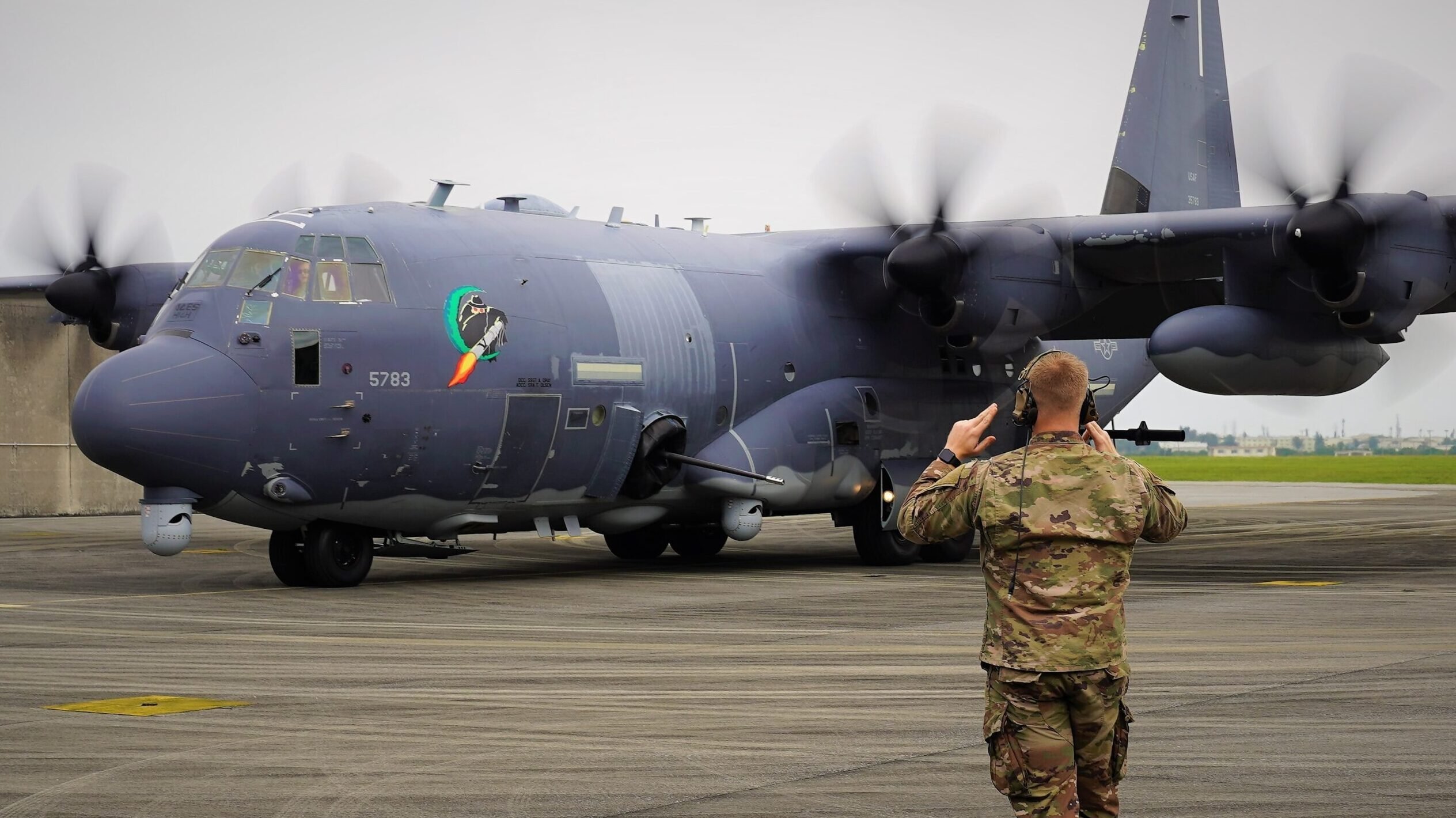
An Airman from the 73rd Special Operations Squadron marshals an AC-130J Ghostrider to its parking location after landing at Kadena Air Base on March 29, 2021. (Capt. Renee Douglas/US Air Force)
WASHINGTON — Air Force Special Operations Command will test an airborne laser in flight on an AC-130J gunship in 2023, a year later than planned.
A flying demonstration of Lockheed Martin’s Airborne High Energy Laser, which will be integrated on an AC-130J Ghostrider, will start in summer 2023 and run through fall, AFSOC spokeswoman Lt. Col. Becky Heyse said response to questions from Breaking Defense.
“Results of the testing will determine future operational usage,” she said. “At this time there is no concept of operation/employment developed for the [high energy laser].”
Lockheed delivered the 60-watt laser to AFSOC in October 2021 after completing factory acceptance testing of the system. At that point, flight demonstrations were slated to occur in 2022.
RELATED: The ‘Kinetic Pendulum’: How the Army wants to defeat drone threats
Lockheed continues to work with AFSOC as it integrates the AHEL laser with other subsystems — such as thermal, power management and beam control — and conducts ground testing, a spokesperson said in a statement. The company “is supporting all AHEL program milestones to include Full Laser Characterization, Full System Integration & High Power Checkout, and Full System Test in support of a planned Flight Test in FY23.”
Mounting a directed energy weapon on an AC-130J gunship has been a perennial but somewhat elusive goal for AFSOC for almost a decade. The Ghostrider already packs a formidable punch, outfitted with a Precision Strike Package that includes 30mm and 105mm cannons, while also being able to fire precision guided munitions such as the GBU-39 Small Diameter Bomb, AGM-114 Hellfire missile and AGM-176 Griffin. But a high energy laser would provide AFSOC with a way to shoot down missiles or disable enemy electronics clandestinely, as enemy forces would be unable to see the laser as it beams from the gunship.
Former AFSOC commander Lt. Gen. Bradley Heithold was especially enthusiastic about the promise of laser weapons, saying in September 2015 that he expected the technology to be available “by the close of this decade.”
“This isn’t Star Wars stuff, folks,” he said then, according to Air Force Times. “The technology is ripe for doing this. … I’ve got the space, I’ve got the weight, and I’ve got the power.”
Lockheed was awarded a contract to integrate AHEL with the AC-130 in January 2019. However, the ultimate future of the program remains unclear.
US Special Operations Command requested about $16 million in FY23 to continue laser integration onboard the AC-130J, a boost of about $4 million above FY22 levels due to the planned start of flight testing. That money also funds ground testing and aircraft fit checks ahead of first flight, according to budget materials.
However, after the final flight demonstration, it will be up to AFSOC to decide whether it can shore up precious funds to transition the program from technology development into a program of record. Technical tradeoffs — such as deciding whether the size, weight and power demands of the laser outweigh other potential capability upgrades — could also factor into the decision.
Another potential problem is that the Lockheed’s AHEL was designed for the Block 20 version of the AC-130J. Currently, all AC-130J Block 20s are going through the modification process to become Block 30s, and it is unknown how much time or money it will take to modify the laser design.






















